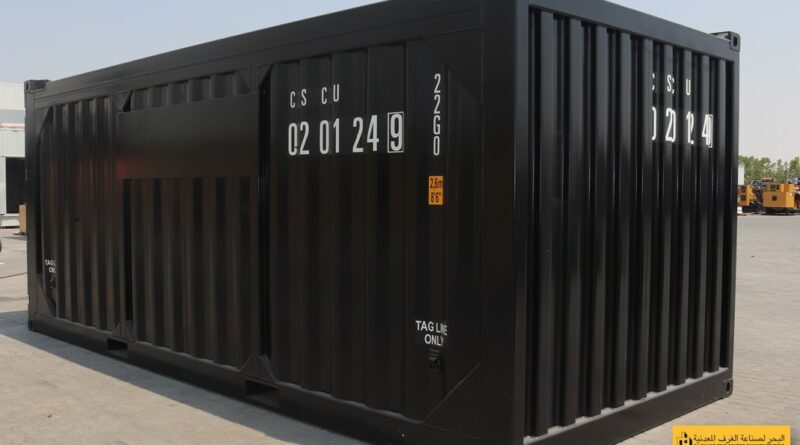Understanding the Price of DNV Containers: Factors, Trends, and Market Insights
In today’s global economy, the transportation of goods plays a crucial role in enabling businesses to thrive. Among the many types of containers used for shipping goods across the world, the DNV (Det Norske Veritas) container has emerged as an essential option for certain industries. Known for their durability and certification standards, DNV containers are often used in marine, offshore, and industrial applications. This blog delves into the factors influencing DNV container prices, current pricing trends, and how businesses can navigate these costs effectively.
What is a DNV Container?
Before diving into pricing details, it’s important to understand what DNV containers are. DNV is a classification society that provides certification and standardization for a wide range of industries, including shipping, energy, and offshore applications. When applied to containers, the DNV certification ensures that the container meets stringent safety and structural standards, making it suitable for use in harsh environments.
DNV containers are often used for transporting hazardous materials, offshore drilling equipment, or goods that require extra protection from environmental factors like water, wind, or extreme temperatures. These containers are designed to withstand extreme conditions, offering reliability and safety. As such, DNV containers are favoured in high-risk industries, including oil and gas, shipping, and marine logistics.
Factors Influencing DNV Container Prices
The price of a DNV-certified container is influenced by several key factors. These include the container’s size, material, intended use, and additional features or modifications that may be required. Below, we explore some of the most important factors affecting DNV container pricing.
Size and Capacity
The size of a container is one of the primary factors affecting its price. DNV containers come in various sizes, with the most common being the 20-foot and 40-foot containers. Larger containers generally cost more due to the increased materials used in manufacturing and the additional strength required for DNV certification. In some cases, the container may be custom-sized to suit specific needs, which further increases the cost.
Material and Build Quality
The material used to construct the container significantly affects its price. DNV containers are typically made from high-strength steel or other durable materials to ensure they can withstand extreme conditions. The quality of the steel, the presence of corrosion-resistant coatings, and the overall design all play a role in determining the final price of the container. Containers designed to withstand extreme weather, chemical exposure, or other hazards will often be more expensive due to the higher material and engineering costs involved.
Certification and Compliance
Obtaining a DNV certification involves rigorous testing and compliance with international standards. Containers must be able to endure harsh maritime conditions, such as high winds, saltwater exposure, and even seismic activity in some cases. The process of ensuring that a container meets these requirements can be costly, as it requires high-quality manufacturing processes and regular inspections. Containers that carry the DNV certification tend to be more expensive compared to standard containers due to these added compliance and certification costs.
Additional Modifications and Customization
Many DNV containers are customized to meet specific business needs. For instance, companies may require modifications to accommodate hazardous materials, refrigeration systems, or ventilation. These added features, such as pressure systems, insulation, and ventilation, can raise the price of the container. Custom-built containers that require special engineering or functionality will naturally cost more than standard, off-the-shelf DNV containers.
Shipping and Logistics
The location of the buyer and the logistics involved in delivering the container also affect the overall cost. Shipping costs for DNV containers can be significant, especially if the buyer is located far from the manufacturing or distribution centre. International shipping, customs duties, and insurance all add to the overall price. Companies that need DNV containers in remote or offshore locations will face additional logistical challenges that can raise costs.
Current Trends in DNV Container Pricing
As with many industries, container prices have fluctuated in recent years due to global supply chain issues, shifts in demand, and changing economic conditions. The shipping industry, in particular, has experienced substantial disruptions due to the COVID-19 pandemic, ongoing port congestion, and the rise in global demand for goods.
Currently, DNV containers, like many other shipping containers, are experiencing price increases due to higher steel prices, limited manufacturing capacity, and supply chain bottlenecks. As businesses seek to secure reliable shipping and storage solutions in increasingly uncertain global conditions, the demand for high-quality, certified containers has grown, driving prices even higher.
Additionally, environmental sustainability is becoming a significant focus in the container industry, leading to a growing demand for containers made from eco-friendly materials or designed to reduce energy consumption. These containers may come at a premium, further influencing the overall cost.
How to Navigate DNV Container Costs
For businesses considering purchasing or leasing DNV containers, there are a few strategies to help manage costs effectively:
Assess Your Needs Carefully
Before committing to a DNV container, assess your specific requirements. Do you need the container for short-term storage or long-term use? What size and modifications are necessary for your cargo? By understanding your exact needs, you can avoid paying for unnecessary features or larger containers that may be underutilized.
Consider Leasing or Renting
If your need for a DNV container is temporary, leasing or renting may be a cost-effective option. Many companies offer rental services for DNV containers, allowing businesses to avoid the high upfront costs of purchasing.
Shop Around for Suppliers
Prices for DNV containers can vary significantly between suppliers. Take the time to compare different suppliers, considering factors such as the quality of their containers, customer service, and pricing. While cost is important, don’t sacrifice reliability and certification standards in the name of a lower price.
Factor in Long-Term Value
Though DNV containers might come with a higher upfront price tag, they often provide long-term value due to their durability and reliability. Investing in a high-quality DNV container may save you money in the long run by reducing the need for frequent repairs, replacements, or dealing with compliance issues.
Conclusion
The price of DNV containers is influenced by various factors, including size, materials, customization, certification requirements, and the logistics involved in delivery. While DNV containers tend to come at a higher price compared to regular containers, their enhanced durability, safety, and compliance make them invaluable in certain industries, especially those that deal with hazardous materials or operate in harsh environments.
By understanding the key factors affecting DNV container prices and carefully assessing your business needs, you can make informed decisions that help you manage costs and ensure the safety and efficiency of your operations.



